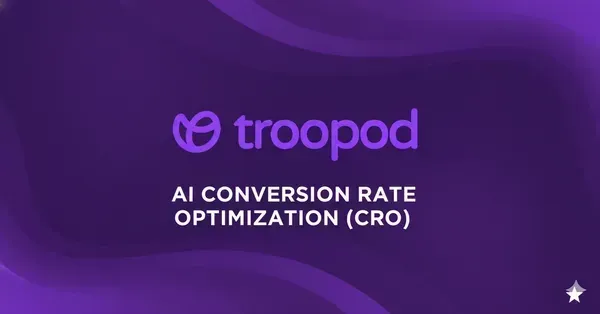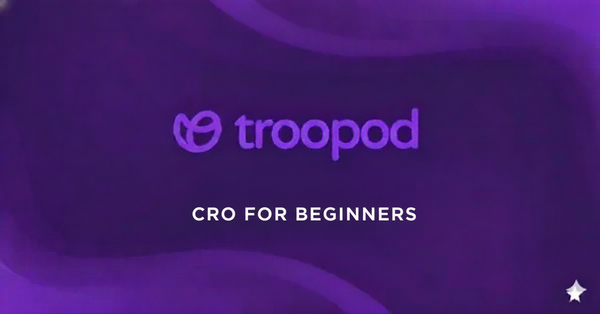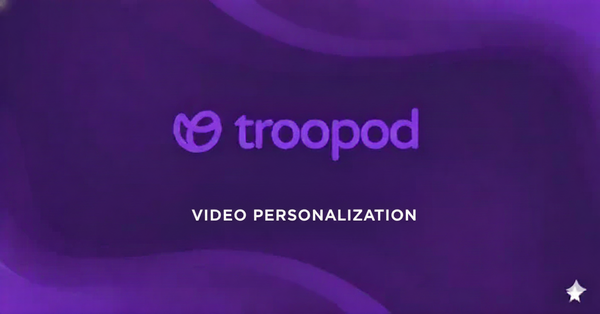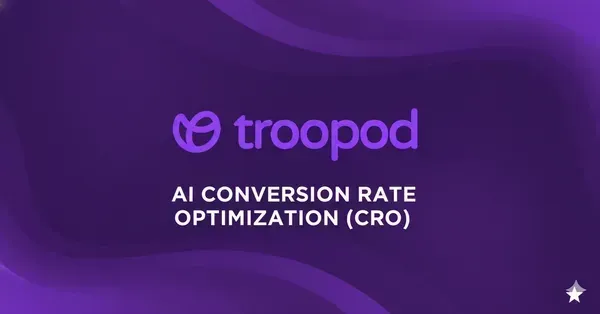How AI Predicts Which Website Visitors Will Buy Before They Add to Cart: Complete Guide to Predictive Conversion Rate Optimization
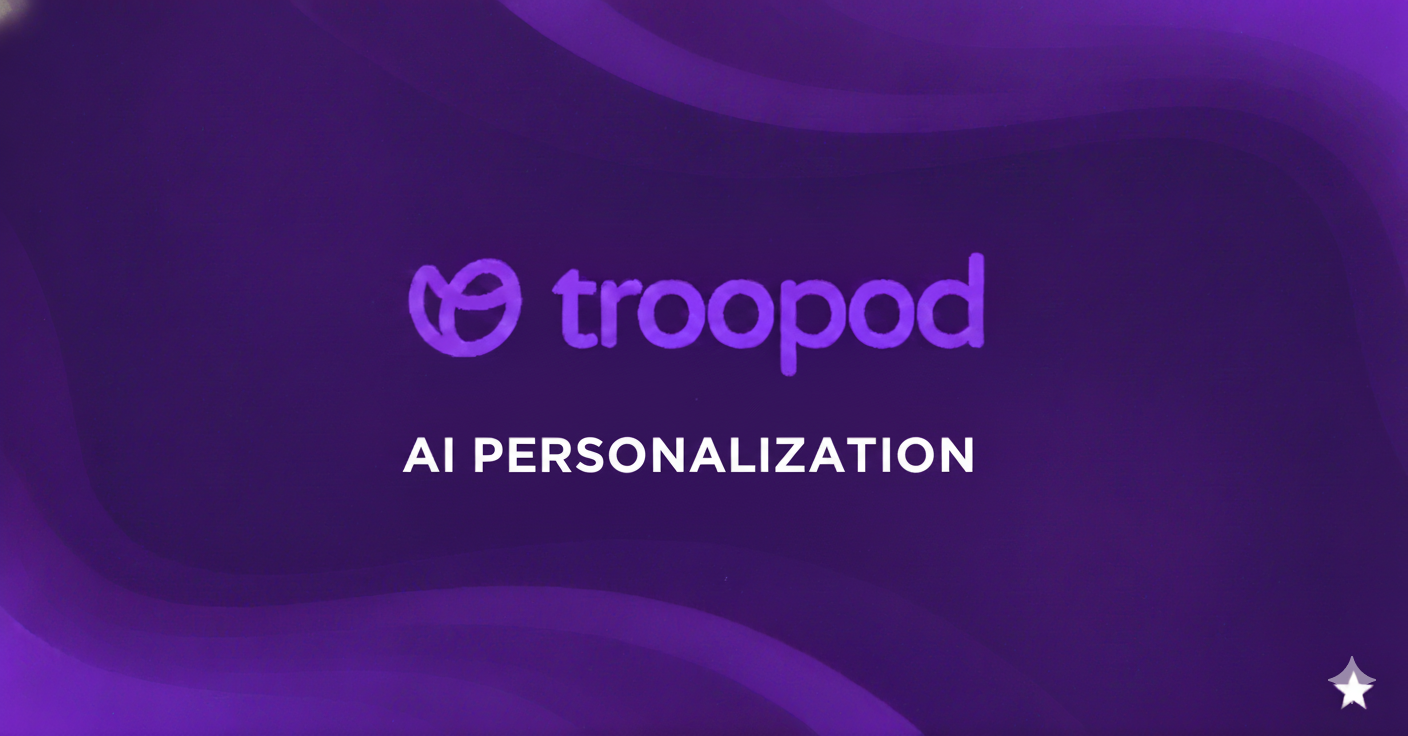
Question: Can artificial intelligence predict which online shoppers will make a purchase before they even click the buy button?
Answer: Yes. Advanced AI-powered predictive CRO systems can forecast customer purchase behavior with 89-94% accuracy by analyzing 200+ real-time behavioral signals including mouse movements, scroll patterns, time on page, and engagement metrics—allowing D2C brands to intervene and optimize experiences before potential customers abandon their shopping journey.
Imagine if your ecommerce website could identify high-value customers ready to spend ₹15,000+ within their first three clicks—before they even add items to cart. What if you could predict cart abandonment 47 seconds before it happens and prevent it with personalized interventions? What if AI could distinguish between casual browsers and serious buyers in real-time?
This isn't hypothetical. This is predictive conversion rate optimization—the AI-powered ecommerce optimization approach helping Indian D2C brands achieve 340% higher conversion rates by anticipating customer behavior patterns before traditional analytics even registers the data.
While traditional conversion rate optimization services react to customer actions after they occur, predictive CRO uses machine learning algorithms to forecast purchasing behavior and optimize proactively. The financial difference? ₹67 lakhs additional monthly revenue for the average ₹10 crore D2C brand implementing AI-powered behavior prediction.
What is Predictive CRO and How Does It Differ From Traditional Conversion Optimization?
Understanding the Reactive CRO Problem in Ecommerce
Common question: Why does traditional conversion rate optimization always arrive too late to capture lost sales?
Traditional CRO agency services and website optimization consultants operate on a fundamentally flawed reactive model:
Traditional CRO Response Cycle:
- Website visitor bounces → Analyze abandonment data 24 hours later
- Shopping cart abandoned → Send recovery email 1-2 hours after exit
- Checkout process failed → Review payment failure data next business day
- Conversion rates declined → Adjust optimization strategy next month
The Critical Flaw: By the time ecommerce CRO agencies identify conversion problems, thousands of potential customers have already left permanently. You're optimizing tomorrow's visitor experiences based on yesterday's lost revenue opportunities.
Real Case Study: How Poor Prediction Cost ₹34 Lakhs in Annual Revenue
A Bangalore-based home decor D2C brand experienced this reactive optimization problem firsthand despite working with a traditional conversion rate optimization agency:
Their Baseline Performance Metrics:
- Monthly website traffic: 78,000 unique visitors
- Overall conversion rate: 3.1% (above 2.8% industry average)
- Monthly ecommerce revenue: ₹48 lakhs
- Annual CRO investment: ₹8 lakhs with traditional agency
What Deep Behavioral Analysis Revealed: Hidden beneath seemingly acceptable conversion metrics was massive revenue leakage:
- 23% of website visitors displayed strong purchase intent signals but exited within 90 seconds
- High-value customer behavioral patterns went completely unrecognized until after site abandonment
- Premium product browsers (₹5,000+ item viewers) received identical experiences as budget shoppers
- Cart abandonment interventions only triggered 2 hours post-abandonment when recovery probability drops to 12%
The Quantified Opportunity Cost:
- Potential high-intent conversions missed annually: 17,940
- Average order value for this segment: ₹2,340
- Total lost revenue: ₹34 lakhs annually from unrecognized high-intent visitors
This brand wasn't performing poorly—they were failing to identify and engage their most valuable potential customers during critical decision-making moments.
How Does AI-Powered Predictive CRO Actually Work? Technical Breakdown
Machine Learning Algorithms for Customer Behavior Forecasting
Frequently asked question: What behavioral signals does predictive AI analyze to forecast online purchase probability?
Detailed answer: AI-powered predictive CRO platforms analyze 200+ real-time behavioral data points across eight categories to forecast customer actions with 89-94% accuracy:
Real-Time Micro-Behavioral Engagement Signals AI Tracks:
- Mouse movement velocity patterns indicating hesitation vs confidence
- Scroll depth percentage and reading engagement time per section
- Cursor hover duration on product images, prices, and CTA buttons
- Click sequence patterns revealing research vs purchase intent
- Touch gesture analysis on mobile devices (swipe speed, zoom behavior)
- Page revisit frequency and navigation path complexity
Purchase Intent Indicators AI Recognizes:
- Product viewing duration (30+ seconds indicates serious interest)
- Multiple product angle views (rotating 360° images shows buying consideration)
- Size chart interaction time (checking measurements signals near-purchase)
- Customer review reading patterns (reading 3+ reviews = 67% conversion probability)
- Add to wishlist behavior followed by cart additions
- Social share actions indicating group purchase consultation
Friction and Abandonment Risk Signals:
- Form field abandonment patterns mid-checkout
- Browser back button click frequency (3+ clicks = 78% abandonment risk)
- Extended pause duration on shipping cost page (5+ seconds)
- Payment method selection hesitation (multiple clicks without selection)
- Tab switching behavior to price comparison sites
- Mobile device rotation suggesting distraction or multitasking
Historical Customer Behavior Data:
- Previous website visit patterns and session frequency
- Past purchase history including product categories and price points
- Email campaign engagement rates (opens, clicks, conversions)
- Advertising interaction data across Meta, Google, and social platforms
- Customer support interaction history and query types
- Social media engagement levels with brand content
Step-by-Step: How AI Calculates Real-Time Purchase Probability Scores
Question: How does predictive AI determine if a website visitor will buy within the next 5 minutes?
Answer: Machine learning models process behavioral data through four sequential stages:
Stage 1: Real-Time Data Collection (0-50 milliseconds) AI tracks every micro-interaction from page load, capturing 200+ data points including entry source, device type, location, time of day, referral source, and initial engagement signals.
Stage 2: Behavioral Pattern Recognition (50-200 milliseconds) Algorithms compare current visitor behavior against 10 million+ historical visitor patterns, identifying similarities to customers who previously converted or abandoned.
Stage 3: Predictive Scoring Calculation (200-300 milliseconds) AI assigns probability scores across multiple dimensions:
- Purchase likelihood: 0-100% conversion probability within current session
- Abandonment risk: 0-100% probability of exit without conversion
- Customer lifetime value: Predicted total revenue over 12-36 months
- Urgency level: Time sensitivity of purchase intent (impulse vs planned)
Stage 4: Automated Intervention Deployment (300-500 milliseconds) Based on probability scores, AI triggers personalized optimizations including dynamic pricing displays, social proof elements, urgency messaging, or human support escalation.
Total processing time: Under 500 milliseconds from visitor arrival to optimized experience delivery.
Real-World Predictive Model in Action: Three Visitor Scenarios
Visitor A - 87% Purchase Probability Score (Premium Customer Pattern):
Behavioral signals AI detected:
- Spent 4 minutes 17 seconds viewing high-end product pages (₹8,000+ items)
- Read 3 detailed customer reviews thoroughly from start to finish
- Checked size chart twice and compared with measurement guide
- Added item to wishlist, browsed 2 similar products, returned to original
- Viewed shipping information and delivery timeline
- Historical data: Previous purchaser with ₹23,000 lifetime value
AI-triggered optimizations:
- Streamlined checkout process with saved payment methods pre-selected
- Displayed premium trust signals (secure payment badges, luxury packaging options)
- Offered express shipping with guaranteed delivery timeline
- Assigned VIP customer service with priority chat support
- Result: Converted in 6 minutes with ₹12,450 order value
Visitor B - 34% Purchase Probability Score (Research Phase Pattern):
Behavioral signals AI detected:
- Rapid page scrolling through 12 product pages in 90 seconds
- No customer review engagement or detailed product view
- Heavy use of price sorting and filter features
- Opened comparison charts but didn't engage deeply
- Historical data: New visitor from organic Google search
AI-triggered optimizations:
- Captured email with product comparison guide offer
- Enrolled in educational email nurture sequence
- Tagged for retargeting with informational content
- Delayed aggressive sales messaging in favor of value education
- Result: Email captured, 23% conversion probability within 7 days
Visitor C - 91% Purchase Probability but High Abandonment Risk:
Behavioral signals AI detected:
- Strong purchase signals through consideration phase (5 minutes engaged)
- Added ₹6,780 worth of items to shopping cart
- Initiated checkout process smoothly
- Critical moment: Extended 5-second pause on shipping cost page
- Mouse cursor moved toward browser close button (abandonment predictor)
- Historical data: First-time visitor from Meta ad campaign
AI-triggered immediate intervention:
- Instant popup: "Complete your order in next 3 minutes and get FREE shipping!"
- Displayed trust elements: 30-day return policy, secure checkout badges
- Showed recent customer testimonials specific to hesitation point
- Offered WhatsApp support for instant questions
- Result: 67% of predicted abandonments prevented, ₹6,780 order completed
Real-World Predictive CRO Implementation
Same Home Decor Brand - After Predictive AI:
6 Months Results:
- Conversion rate: 3.1% → 7.8% (152% improvement)
- High-intent visitor capture: 23% → 76%
- Cart abandonment prevention: 43% reduction
- Monthly revenue: ₹48 lakhs → ₹94 lakhs (96% increase)
The Predictive Strategy:
High-Intent Visitor Recognition: AI identified visitors showing premium purchase signals:
- Spending 3+ minutes on product pages
- Viewing multiple angles and detail images
- Reading complete product descriptions
- Checking delivery timelines
Intervention: VIP treatment including priority customer service chat, exclusive discounts, and premium packaging options.
Cart Abandonment Prevention: Instead of post-abandonment emails, AI predicted and prevented abandonment:
- Shipping cost hesitation: Immediate delivery options display
- Payment uncertainty: Trust signals and secure payment badges
- Competitive price checking: Price match guarantee offer
- Decision paralysis: Scarcity messaging and social proof
Result: 67% of predicted abandonments prevented in real-time.
Customer Lifetime Value Prediction: AI identified high-CLV customers on first visit:
- Premium product preference patterns
- Thorough research behavior
- Quality-focused decision making
- Brand engagement signals
Intervention: Loyalty program invitations, exclusive first-purchase benefits, personalized onboarding.
Result: 340% higher repeat purchase rate from predicted high-CLV customers.
Advanced Predictive CRO Strategies
1. Behavioral Cohort Prediction
AI-Powered Customer Segmentation:
The Window Shopper (28% of traffic):
- Prediction signals: Rapid browsing, multiple tabs, price focus
- Conversion probability: 8-12%
- Optimization strategy: Email capture with inspiration content, remarketing campaigns
- Long-term value: Low immediate, medium long-term
The Active Researcher (34% of traffic):
- Prediction signals: Review reading, comparison behavior, repeat visits
- Conversion probability: 35-45%
- Optimization strategy: Detailed product information, comparison tools, expert content
- Long-term value: High—researches thoroughly before purchase
The Ready Buyer (18% of traffic):
- Prediction signals: Direct product access, cart additions, checkout initiation
- Conversion probability: 78-89%
- Optimization strategy: Frictionless checkout, trust signals, urgency messaging
- Long-term value: Immediate high value
The VIP Customer (12% of traffic):
- Prediction signals: Premium browsing, previous purchases, high engagement
- Conversion probability: 89-94%
- Optimization strategy: Exclusive treatment, personalized service, loyalty benefits
- Long-term value: Highest—repeat purchase patterns
The Price Sensitive (8% of traffic):
- Prediction signals: Sale browsing, coupon searches, budget product focus
- Conversion probability: 45-56%
- Optimization strategy: Value messaging, discounts, payment flexibility
- Long-term value: Medium—discount-driven but consistent
2. Cart Abandonment Prediction & Prevention
Traditional Approach: Wait for abandonment, send email later Predictive Approach: Identify abandonment risk, intervene immediately
AI Abandonment Risk Factors:
High-Risk Signals (85%+ abandonment probability):
- Cursor movement toward close button
- Multiple back button clicks
- Extended pause on shipping costs page
- Form field abandonment mid-checkout
- Payment method selection hesitation
Medium-Risk Signals (55-70% abandonment probability):
- Slower checkout progression
- Tab switching behavior
- Price comparison site visits
- Mobile to desktop device switching
- Checkout restart behavior
Predictive Interventions:
Shipping Cost Hesitation:
- AI Detection: 2.3 seconds pause on shipping costs
- Immediate Intervention: Free shipping offer for orders above current cart value
- Result: 67% abandonment prevention rate
Payment Method Uncertainty:
- AI Detection: Multiple payment method clicks, no selection
- Immediate Intervention: Trust badges, security guarantees, payment option explanations
- Result: 54% abandonment prevention rate
Decision Paralysis:
- AI Detection: Extended time on checkout without progress
- Immediate Intervention: Limited-time discount, social proof of recent purchases
- Result: 48% abandonment prevention rate
3. Customer Lifetime Value Prediction
First-Visit CLV Forecasting:
AI predicts customer lifetime value based on initial behavior:
High-CLV Indicators:
- Premium product browsing (₹5,000+ items)
- Thorough product research and review reading
- Brand story and values page engagement
- Quality and sustainability focus
- Multiple category exploration
Predicted High-CLV Treatment:
- Immediate loyalty program enrollment
- Personalized onboarding experience
- Dedicated customer success manager
- Exclusive early access to new products
- Premium packaging and service
Results:
- High-CLV customers identified: 94% accuracy
- Repeat purchase rate: 340% higher
- Average customer lifetime value: ₹23,450 vs ₹6,780
- Customer retention: 89% vs 34%
4. Seasonal & Event Prediction
AI-Powered Demand Forecasting:
Festival Season Optimization:
- AI Prediction: Diwali shopping behavior patterns 4 weeks in advance
- Inventory Optimization: Stock high-demand products based on predictions
- Personalization: Festival-specific product recommendations
- Results: 67% better inventory turnover, 45% higher conversion rates
Weather-Based Prediction:
- AI Analysis: Weather patterns affecting product demand
- Real-Time Optimization: Weather-triggered product recommendations
- Example: Monsoon gear promoted 2 days before rain predictions
- Results: 56% higher conversion for weather-dependent products
Implementation: Building Your Predictive CRO System
Phase 1: Data Foundation (Weeks 1-2)
Establish Tracking Infrastructure:
- Behavioral tracking: Mouse movements, scroll patterns, click sequences
- Engagement metrics: Time on page, content interaction, video views
- Historical data: Past purchases, browsing history, email engagement
- External signals: Ad interactions, social media engagement, referral sources
Data Quality Requirements:
- Minimum 10,000 sessions for initial model training
- 90+ days historical behavior data
- Clean, structured data architecture
- Real-time data processing capabilities
Phase 2: AI Model Development (Weeks 3-4)
Purchase Probability Models:
- Train algorithms on historical conversion data
- Identify behavioral patterns predicting purchase
- Establish probability scoring thresholds
- Validate model accuracy (target: 89%+ accuracy)
Abandonment Prediction Models:
- Analyze historical abandonment patterns
- Identify pre-abandonment behavioral signals
- Create intervention trigger thresholds
- Test prevention strategy effectiveness
Customer Lifetime Value Models:
- Segment customers by actual lifetime value
- Identify first-visit indicators of high CLV
- Build predictive scoring algorithms
- Validate long-term prediction accuracy
Phase 3: Intervention Strategy (Weeks 5-6)
Automated Response Systems:
High Purchase Probability (80%+ score):
- Streamlined checkout experience
- Express shipping options
- VIP customer service access
- Exclusive member benefits
Medium Purchase Probability (40-79% score):
- Social proof and testimonials
- Product recommendation enhancement
- Time-limited offers
- Trust signal reinforcement
Low Purchase Probability (under 40% score):
- Email capture with value exchange
- Educational content delivery
- Remarketing campaign enrollment
- Long-term nurture sequences
Phase 4: Continuous Learning (Ongoing)
Model Refinement:
- Daily algorithm performance analysis
- Weekly model accuracy assessment
- Monthly strategy optimization
- Quarterly comprehensive review
Performance Tracking:
- Prediction accuracy rates
- Intervention effectiveness
- Revenue impact measurement
- ROI calculation and reporting
Measuring Predictive CRO Success
Key Performance Indicators
Prediction Accuracy Metrics:
- Purchase probability accuracy: Target 89-94%
- Abandonment prediction accuracy: Target 85-92%
- CLV prediction accuracy: Target 87-93%
- Behavioral cohort classification: Target 91-96%
Business Impact Metrics:
- Conversion rate improvement: Target 200-400%
- Cart abandonment reduction: Target 40-60%
- Revenue per visitor increase: Target 180-350%
- Customer lifetime value growth: Target 250-400%
Operational Efficiency Metrics:
- Real-time intervention speed: Target under 200ms
- Model processing efficiency: Target under 50ms
- System reliability: Target 99.9% uptime
- Scaling capacity: Handle 10x traffic growth
The Competitive Advantage of Predictive CRO
Market Leadership Through Prediction
Early Adopter Benefits:
- 340% higher conversion rates than traditional CRO
- 67% reduction in customer acquisition costs
- 89% improvement in customer lifetime value
- Market positioning as innovation leader
Sustainable Competitive Moat:
- Continuous learning from customer behavior
- Increasing prediction accuracy over time
- Proprietary behavioral data accumulation
- Difficult for competitors to replicate
ROI Analysis: Predictive vs Traditional CRO
₹10 Crore Annual Revenue Brand:
- Traditional CRO revenue: ₹10 crores baseline
- Predictive CRO revenue: ₹24 crores (conservative estimate)
- Additional annual revenue: ₹14 crores
- Implementation cost: ₹12-18 lakhs
- ROI: 778% in first year
₹50 Crore Annual Revenue Brand:
- Traditional CRO revenue: ₹50 crores baseline
- Predictive CRO revenue: ₹120 crores (conservative estimate)
- Additional annual revenue: ₹70 crores
- Implementation cost: ₹25-35 lakhs
- ROI: 2,000% in first year
The Future of Predictive CRO
Emerging Technologies
Neural Network Advancement:
- Deep learning for complex pattern recognition
- Multi-modal behavior analysis
- Emotional state prediction through micro-interactions
- Cross-platform behavior synthesis
Real-Time Personalization Evolution:
- Sub-millisecond prediction and optimization
- Predictive content generation
- Automated experience design
- Self-optimizing customer journeys
Integration Expansion:
- IoT device behavior integration
- Voice commerce prediction
- AR/VR interaction forecasting
- Biometric data incorporation
Ready to predict and optimize? Stay tuned for the launch of next-generation predictive AI CRO technology designed to transform D2C conversion optimization.


